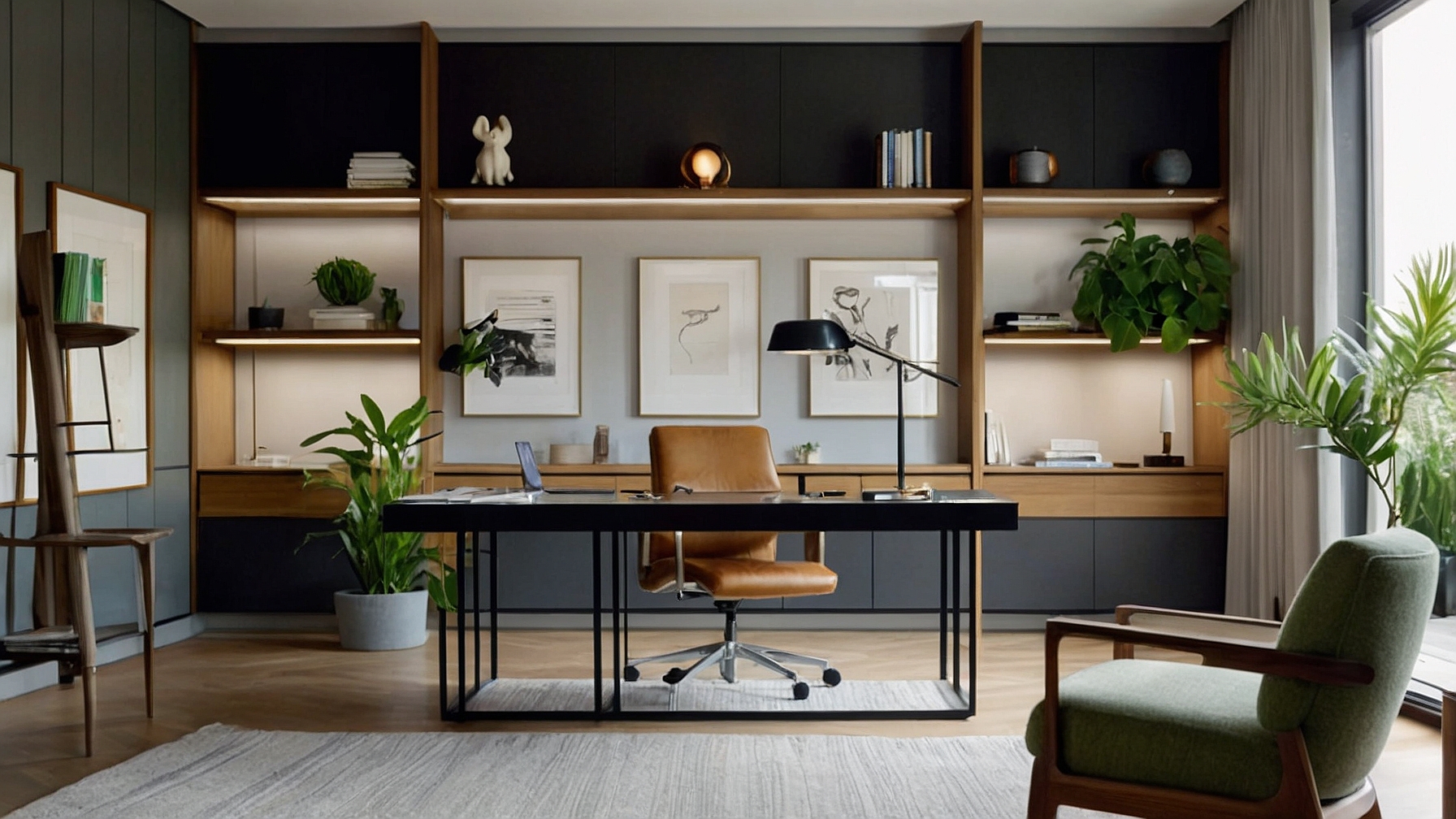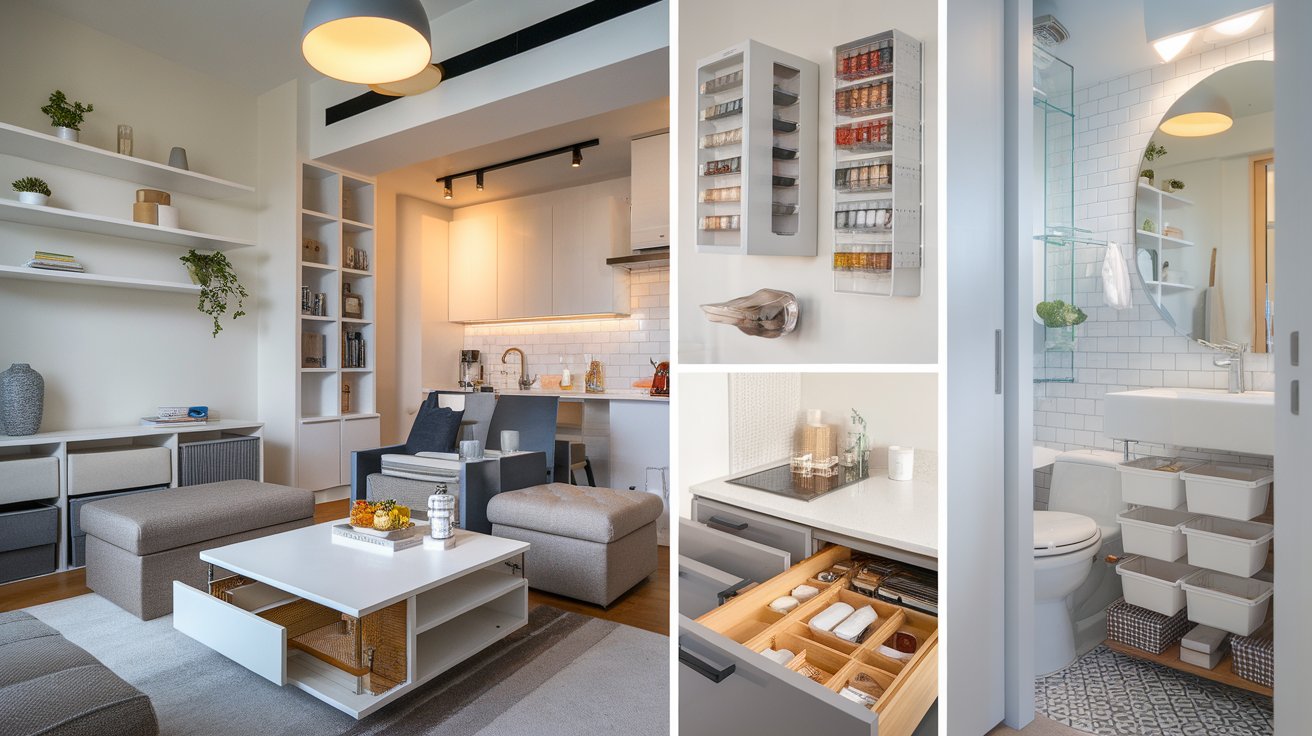Introduction
In an age where remote work and home offices have become more prevalent, finding the right workspace in compact environments is essential. Small space DIY desk setups present creative solutions for those wanting to enhance productivity without compromising their living area. From folding desks to multifunctional furniture, there are plenty of innovative designs and concepts to explore that make the most of limited space while offering functionality and style.
This article work into various DIY desk ideas tailored for small spaces, focusing on how to create a seamless workstation that caters to your personal style and work requirements. We will cover essential factors like materials, design tips, and practical implementations, allowing you to transform your compact area into an efficient and inspiring workspace.
Understanding Small Space Design Principles for Compact Workstations

Maximizing Utility in Small Spaces
Designing a workstation in a compact area involves a deep understanding of small space principles that prioritize functionality without sacrificing comfort. The first foundation of effective small space design is maximizing utility. Every inch counts, and multi-purpose furniture is a critical consideration. Desks should not merely serve as surfaces for work but also accommodate storage, organization, or even leisure activities. For instance, a desk that integrates shelves or drawers helps eliminate clutter while keeping essentials within easy reach, supporting productivity and focus.
Essential Design Elements and Spatial Awareness
Another essential component of small space design is spatial awareness. Understanding how to manipulate a limited area can substantially increase comfort and usability in a workstation. Designing with vertical space in mind allows for the inclusion of shelving above the desk, ensuring floor space remains open and unobstructed. Light colors and reflective surfaces can also create an illusion of space, making the workstation feel larger and more inviting. By carefully planning the layout, one can create an area that feels expansive rather than cramped, promoting an atmosphere conducive to work.
The significance of effective lighting should not be overlooked in small space design. Natural light is preferable, as it reduces reliance on artificial sources and enhances overall mood. Positioning a desk near a window while layering with adjustable table lamps can provide flexibility in lighting options. Combining these design elements contributes to creating a workspace that is both practical and aesthetically pleasing, ultimately fostering better performance.
The Importance of Multi-functionality
Multi-functionality emerges as a pivotal aspect in creating effective workstations within small spaces. A desk can serve not only as a workspace but also as a dining area, crafting station, or additional storage, depending on individual needs. Consider options like a foldable desk that can be stowed away when not in use or a wall-mounted desk that unfolds for work and hides away to clear floor space. Such versatility ensures that the workspace can adapt, evolving with changing needs and preferences while maintaining organization and efficiency.
Incorporating these design principles allows for the development of a small space workstation that boosts productivity. By emphasizing utility, spatial awareness, and multi-functionality, one can transform even the most limited spaces into effective areas for work, creativity, and inspiration.
DIY Desk Designs for Small Spaces Solutions for Compact Workstations

Creating a functional workstation in a small area requires innovative DIY desk designs that prioritize space efficiency. Small space DIY desks can be customized to fit unique requirements, whether they need to tuck away in a corner or serve multiple functions. Here are several creative ideas that cater to these needs effectively.
Corner Desks for Optimization
One popular solution for small workspaces is the corner desk. Utilizing the least accessible areas of a room, corner desks maximize the use of available space. For example, an L-shaped desk can be constructed using wooden boards, giving ample surface area to work while fitting snugly into the corner. You can add shelves above the desk for additional storage. This design keeps necessary items close at hand while ensuring that the workspace remains uncluttered.
Foldable Desks for Flexibility
Foldable desks present an ingenious option for those who need a workstation that can be easily tucked away when not in use. A simple wall-mounted drop-leaf table can suffice. It can be lifted to create a workspace when needed and folded down to free up space afterward. This design can also include hooks underneath for hanging office supplies or a chair that can be easily stored, further enhancing your compact workstation’s functionality.
Multifunctional Desks for Versatility
Another exciting approach is to create a multifunctional desk that serves multiple purposes. A small desk can be designed to incorporate storage features. For instance, a desk can be built atop a set of drawers, allowing the entire setup to function as both a workspace and a storage solution. You can also integrate a fold-out shelf or hidden compartments, facilitating quick access to supplies while maintaining a clean aesthetic.
Customized Designs to Suit Personal Style
Customization allows you to infuse personal style into your DIY desk. Paint or stain the wood in colors that resonate with your home environment, or choose hardware that complements your decor. Using materials like reclaimed wood can offer an eco-friendly option while providing a rustic aesthetic. Moreover, incorporating elements like pegboards can serve not only as decor but as a functional way to organize tools or notes directly above your desk.
By integrating these small space DIY desk designs, you can create a functional and stylish workstation tailored to your personal needs and preferences, enhancing productivity within limited areas.
Repurposing Furniture for Your DIY Desk Creative Solutions for Compact Workstations

Transforming Ordinary Items into Functional Desks
Repurposing furniture can be a game changer for creating effective workstations in small spaces. Instead of discarding old furniture, consider how these forgotten pieces can be transformed into functional desks that enhance your productivity. This not only saves money but also adds a unique character to your workspace. Here are some creative strategies to consider when turning various types of furniture into compact desks.
Old bookcases, for example, can be easily converted into a desk by simply adding a flat surface on top. Look for a sturdy wooden board that matches the width of the shelves. This allows you to create a dedicated workspace while utilizing the existing shelving for storage. By place your computer, notebooks, and office supplies on the shelves below, you maximize both desk space and organization.
Another potential candidate for repurposing is a small dresser. A dresser with shallow drawers can serve double duty as a desk while providing ample storage for office supplies. Simply remove the top drawers or replace them with a flat surface to create your workstation. The side drawers can still hold essential items like stationery, files, and even a small printer. By painting or refinishing the dresser, you can customize its appearance to fit your personal style, making it both functional and aesthetically pleasing.
Tables and nightstands are also excellent options for small space desks. An old side table can be transformed into a work desk with just a few adjustments. If the height is suitable, consider adding a contrasting tabletop that complements your decor. You can also use a drop-leaf table for a versatile solution that can be folded away when not in use, providing a clear walkthrough space.
For those on a tighter budget or seeking an eco-friendly approach, repurposing pallets is a great choice. With a little sanding and a coat of paint, pallets can be converted into rustic-style desks that add a unique flair. By elevating the pallets on casters, the desk can be mobile and easily moved when needed, making it an adaptable solution for dynamic work environments.
Creative repurposing of old furniture can yield impressive small space desks that are not only practical but also reflective of your personal style. By thinking outside the box and utilizing what you already have, you can create a beautiful and functional workstation that enhances productivity in limited areas.
Creative Use of Materials in Small Space Desks Solutions for Compact Workstations

Exploring Material Choices for Small Space Desks
Creating a functional and aesthetically pleasing desk in a limited area demands careful consideration of materials. Various options can enhance both the style and usability of compact workstations. Reclaimed wood, metal, and composite materials each bring unique benefits to the table, addressing the practical needs of small space living while offering design versatility.
Reclaimed wood stands out as a popular choice for small space desks. The natural texture and warm tones of salvaged timber add character and charm to any workspace. This material is not just eco-friendly; it also tells a story and can seamlessly fit into different design styles, from rustic to modern. Its durability ensures that it can withstand the wear and tear of daily use, making it both functional and sustainable. Additionally, a simple desk made from reclaimed wood can be an affordable option if sourced correctly, allowing for personalized stains and finishes to match one’s decor.
Metal is another excellent choice, often favored for its industrial appeal. Steel or aluminum frames offer sturdiness and a sleek look, ideal for minimalist designs. The clean lines of a metal desk can help create the illusion of more space, making the environment feel less cluttered. Moreover, metal can support larger workloads, accommodating various accessories without compromising stability. Combining metal with wooden surfaces, such as a metal frame with a reclaimed wood top, can also yield a visually striking desk that marries both materials’ strengths.
Composite materials present a more contemporary option for small space desks. These desk surfaces often include laminate, MDF, or particleboard, which can mimic the appearance of solid wood at a fraction of the cost. Composite materials are lightweight and easy to maneuver, crucial in small spaces where flexibility is key. They are typically available in a wide variety of colors and finishes, allowing for customization to suit personal taste. While they may not have the same charm as reclaimed wood or the ruggedness of metal, they provide practicality and modern aesthetic appeal.
Selecting the right material for a small space desk requires balancing aesthetics with functionality. Understanding the unique characteristics of each option can help maximize the impact of a compact workstation, ensuring that it meets both your productivity needs and design preferences.
Maximizing Comfort in a Compact Workspace

Ergonomic Considerations for Small Space Desks
Creating a comfortable workstation within a limited space requires thoughtful design that prioritizes ergonomics. When selecting a desk, ensure it is at the correct height to prevent strain on your wrists while typing. An ideal desk height allows your forearms to be parallel to the ground and your feet flat on the floor or a footrest. If a standard desk height doesn’t fit your needs, consider adjustable height desks or risers to accommodate your comfort.
Chair selection is equally vital. Opt for chairs that provide ample lumbar support to maintain your spine’s natural curvature, preventing back pain during long hours of work. If space allows, a chair with adjustable height and tilt can significantly enhance comfort. When space is at a premium, consider foldable or stackable chairs that can be tucked away when not in use while still offering support.
Seating Options and Workspace Organization
In compact workspaces, the right seating option can make all the difference. A desk chair with wheels offers the freedom to move within your small area, optimizing both comfort and efficiency. For an even more minimalist approach, try using a cushioned stool. While it takes up less space, make sure it has enough padding to keep you comfortable throughout your work hours. Balance the need for mobility with the stability a traditional chair provides to avoid distractions while working.
Effective organization also plays a critical role in maintaining comfort in a cramped environment. Utilize vertical storage solutions, such as wall shelves or pegboards, to keep essential items off your desk, giving you more space to work. Desk organizers can help keep frequently used supplies within arm’s reach while maintaining an uncluttered surface. This not only leads to a more visually pleasing workspace but also reduces the physical strain of reaching for items constantly.
Designing a small office setup involves careful consideration, blending comfort with functionality in every detail. By focusing on ergonomic principles in your seating and workspace organization, you can create a highly productive and comfortable environment that caters to your needs, ensuring that long hours spent at your desk do not lead to unnecessary strain. The right small space desk configuration invites creativity and focus, crucial elements for productivity in any compact workstation.
Personalization of Small Space Desks Transforming Compact Workstations

Creating Your Inspiring Workspace
Personalizing a small space desk can significantly enhance not only your workspace aesthetics but also your productivity and motivation. A compact workstation doesn’t have to be bland or uninviting; in fact, it can reflect your personal style and encourage creativity. Consider beginning with a color palette that resonates with you. Utilize wall paints or desk accessories in your favorite hues, which can set a positive tone for your tasks. This simple change creates an environment that feels uniquely yours.
One effective method for individualizing your desk is by incorporating decorative touches that reflect your personality. Items like framed photographs, motivational quotes, or artwork can instantly transform a sterile desk into a lively space. Arrange these items strategically to avoid clutter while still allowing them to inspire you. Consider a pegboard or wall-mounted shelves where you can display these decorative pieces without sacrificing valuable desk space.
Utilizing Organization Tools for Customization
Functionality is just as important as aesthetics when personalizing a small desk. Incorporating organization tools that suit your work habits can optimize your workflow. Drawer dividers and desktop organizers are great ways to keep essentials within reach while maintaining a tidy appearance. Consider using colorful bins or baskets that not only serve a purpose but also add splashes of color to your workspace.
Customizing your desk also means ensuring all the items you need for work are easily accessible. Invest in vertical storage solutions—like wall-mounted racks or pegboards—that allow you to keep supplies organized without occupying too much floor space. Labels for containers can add an extra bit of personality, and it can also aid in establishing a sense of order that promotes efficiency.
Incorporate personal items that bring a sense of comfort or joy. A favorite mug, a plant, or even small figurines can imbue the workspace with a sense of warmth and familiarity, ensuring that each time you sit down to work, you’re entering a space that feels welcoming. By cultivating an inspiring environment through personalization, you’re not merely creating a desk; you’re crafting a motivating hub where productivity thrives amidst the constraints of limited space.
Conclusions
Crafting a small space DIY desk that meets your needs is not just a matter of functionality but also aesthetics. The right desk can significantly impact your productivity and the overall atmosphere of your workspace. From utilizing wall-mounted solutions to repurposing existing furniture, this guide has provided various ideas and inspiration for creating a functional and stylish workstation in limited areas.
The goal is to create a workspace that inspires creativity and fosters productivity. By considering the discussed designs and tips, you can successfully navigate the challenges of small space living, making your home office a place where you look forward to working. Remember, the best solutions are often those tailored to your unique space and preferences.






